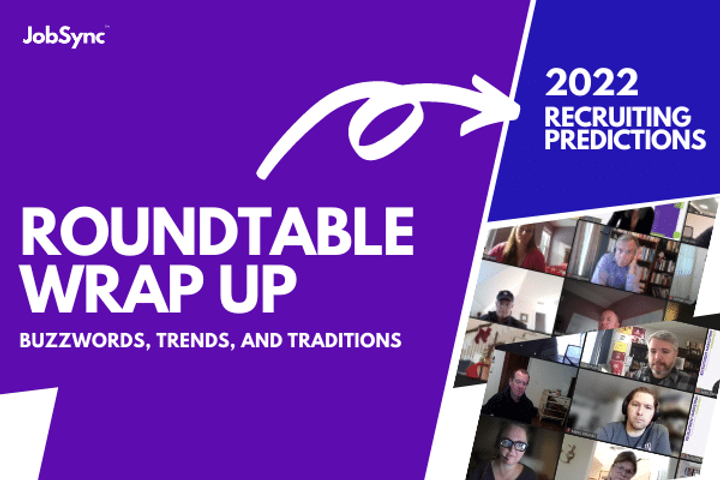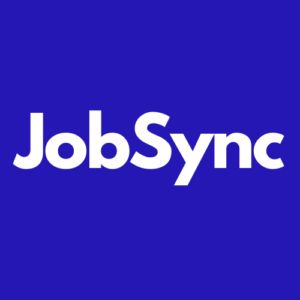
What happens when you put 90 top recruiting minds on one open mic call to talk 2022 trends? Some really good stuff. Here are the top trends that emerged when the reins came and the mics went on.
TREND 1: The Candidate shortage isn’t going away
No surprises here – with 1.48 open jobs per available candidate, we have more work than we have people to do it. That problem isn’t going away, and with increases in exits in the workforces through increases in retirements, the introduction of longhaul COVID cases that can’t return to work, a shortage in childcare options and general exits, the workforce is getting smaller and the demand is continuing to rise.
TREND 2: Companies have to make themselves more attractive than their competitors
As an employer locked into a hiring need with limited candidate options, your only option is to outshine the other companies. You need to understand why working at your company has high-value and you need to be able to articulate that through various mediums. That means understanding and addressing Glassdoor reviews, social media comments, and other avenues where negative feedback may occur. But it also means finding ways to highlight the advantages of the business.
TREND 3: Great companies have accepted that the voice of the employee is the voice of the company
Historically, companies have controlled the narrative. The leadership and marketing teams set the company values, the positioning, the company’s aspirations, the voice, and how the market ‘sees’ the company.
In 2007 Glassdoor launched, offering the first comprehensive view on the employee experience. With the explosion of social media [TikToks, Reels, Vines] employees have many ways to share what it is like to be part of a company. Now, as we roll into 2022, companies have *finally* realized that they no longer control the narrative. The employees [and customers] own it, control it, and won’t allow the sanitizing of the message.
Laying in the realization that DE&I is not a recruiting effort but rather a business transformation, forcing the business to support their employees and recruit differently.
TREND 4: Companies that support your best self first are ahead of the curve
Your whole self comes to work. Employees have families. They have dogs and kids and health problems and sick parents and school plays. They work to live, not live to work. Companies that are supportive of the whole employee and their whole life, who they are and what they believe are the companies that find they have the most engaged employees who are the most vocal and supportive of the business.
TREND 5: Remote work isn’t the panacea
Forced to shift, millions of workers left their offices and headed home. Companies layered in technology, new processes, and new opportunities. But as we creep back to normalcy, companies who have struggled moving to remote work are transitioning back, with and without some of their employees.
And for 60% of the workforce, remote work was never part of the equation.
TREND 6: The Great Resignation is the Great Wakeup Call
The great resignation or the great reshuffle might characterize what is happening in the candidate market right now, adding more candidates to the mix (and an equal number of jobs), but the real story is the wakeup call that should be happening to the companies who are losing more employees than they are hiring. Bad leadership and bad practices that were accepted or ignored for years are breeding grounds for churn.
As Ira Wolfe put it, “One black cloud is bad business practices…and frankly…we just got away with it for years and it all showed up in the last year and a half.”
And that churn is the death blow to your recruiters, who are already overwhelmed, under resourced and desperately seeking candidates. Their open jobs per recruiter increases and time to hire gets longer.
TREND 7: Companies are hiring non-traditional employees
Labor shortages create opportunities and companies are considering non-traditional employees. People moving from blue collar work to office work, re-entrants to the market, contact and professional gig work are all on the table, and candidates are embracing new ways to further their livelihoods. The profile of who you will hire is opening and employees are taking advantage to better themselves.
TREND 8: Bad jobs and bad companies exist and people don’t want to work at those jobs and for those companies
Work can be fulfilling – but working for the public isn’t.
Consumer-facing jobs, restaurant, retail, nurses, hair stylists, airline attendants and other frontline jobs to the American public are going back to work, but not in jobs where the hours suck and the customer service component makes their life hellish. Jobs that were once treated with respect and dignity are now jobs where the pay isn’t worth the treatment they receive.
All the better pay and great bosses doesn’t make up for the hitting, spitting, and verbal abuse that has become a normal part of the job. That’s not an easy thing to fix – how do you change an entire country’s attitude towards our service workers?
TREND 9: Lead with empathy
As people reenter the workforce, how we talk to them as candidates matters. Resume gaps and short-term career changes are again the norm – similar to the days when we emerged from the last recession. As a hiring organization, do you need to know that they stopped working to care for their dying parent? Does a year gap make someone unqualified? What does continuous employment tell you as a hiring manager? Anything really?
Somewhere in the process of hiring people we got this idea that continuous employment matters – and gaps must be justified. Focusing on the experiences on the resume and hiring those individuals with gaps without question is a step towards loyal and dedicated new employees.
People have found more meaning in their lives and the way they look at work so let’s meet them with some grace.
TREND 10: Experience is the name of the game
“A lot of recruiters right now are learning what a sh*tty candidate experience is.” – Brian Fink
Candidate experience is the buzzword of the hour – but really you can’t have a great candidate experience without a great recruiter and great employee experience. If recruiters are drowning in work, too many open requisitions, bad manual processes and moving target requirements – all the optimized clicks and application process seamlessness that have been built are worthless when they can’t call candidates back or reach them in a timely manner. Add in bad bosses and poor employee experiences and your churn goes up and your recruiter’s experience gets worse. If you want a great candidate experience, you have to look holistically at the problem and address your recruiters and employees experiences as well.
Want to hear more? Check out the recording of the roundtable.

